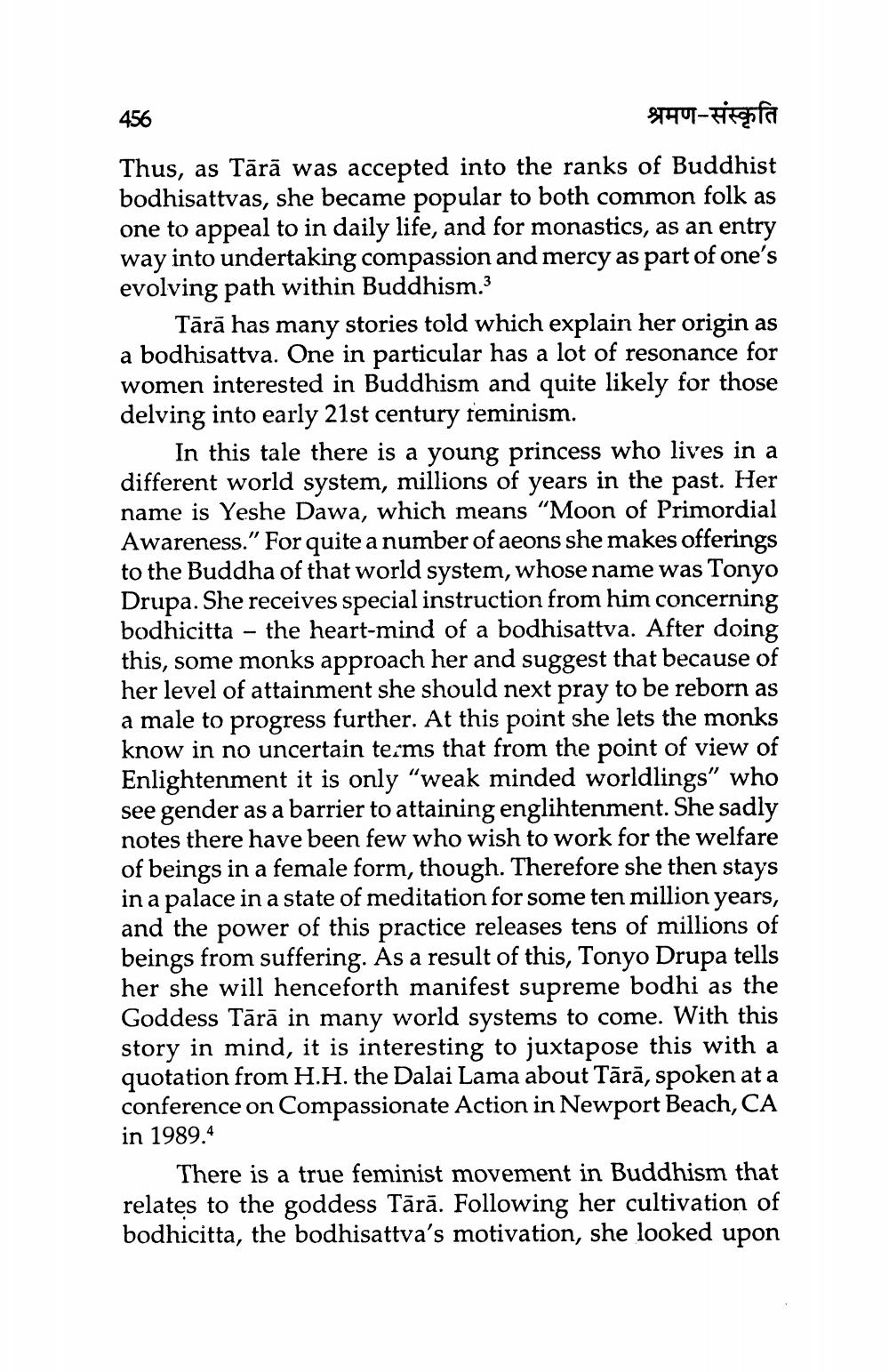________________
456
श्रमण-संस्कृति Thus, as Tārā was accepted into the ranks of Buddhist bodhisattvas, she became popular to both common folk as one to appeal to in daily life, and for monastics, as an entry way into undertaking compassion and mercy as part of one's evolving path within Buddhism.3
Tārā has many stories told which explain her origin as a bodhisattva. One in particular has a lot of resonance for women interested in Buddhism and quite likely for those delving into early 21st century feminism.
In this tale there is a young princess who lives in a different world system, millions of years in the past. Her name is Yeshe Dawa, which means “Moon of Primordial Awareness." For quite a number of aeons she makes offerings to the Buddha of that world system, whose name was Tonyo Drupa. She receives special instruction from him concerning bodhicitta - the heart-mind of a bodhisattva. After doing this, some monks approach her and suggest that because of her level of attainment she should next pray to be reborn as a male to progress further. At this point she lets the monks know in no uncertain terms that from the point of view of Enlightenment it is only "weak minded worldlings" who see gender as a barrier to attaining englihtenment. She sadly notes there have been few who wish to work for the welfare of beings in a female form, though. Therefore she then stays in a palace in a state of meditation for some ten million years, and the power of this practice releases tens of millions of beings from suffering. As a result of this, Tonyo Drupa tells her she will henceforth manifest supreme bodhi as the Goddess Tārā in many world systems to come. With this story in mind, it is interesting to juxtapose this with a quotation from H.H. the Dalai Lama about Tārā, spoken at a conference on Compassionate Action in Newport Beach, CA in 1989.4
There is a true feminist movement in Buddhism that relates to the goddess Tārā. Following her cultivation of bodhicitta, the bodhisattva's motivation, she looked upon




